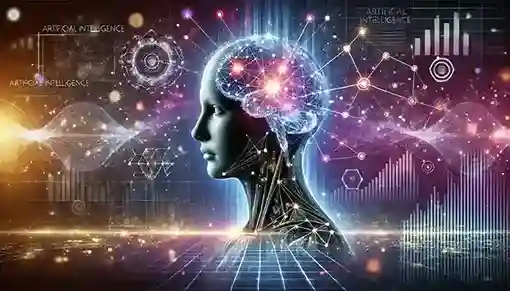Introduction machine-learning with python library Scikit-learn with example
Machine learning with Python Scikit-Learn #Introduction machine-learning with python library Scikit-learn with example
Machine Learning with Python: Introduction to Scikit-Learn with Examples
Machine learning is a branch of artificial intelligence that aims to understand how humans learn and develop strategies to replicate that process using data and algorithms. These techniques typically fall into three primary learning categories:

Types of Machine Learning
- Supervised Learning: The algorithm learns the relationship between input and output by training on labeled data.
- Unsupervised Learning: The algorithm identifies patterns and structures from unlabeled data without explicit guidance.
- Reinforcement Learning: The model learns to take actions in an environment to maximize rewards.
Data Preprocessing in Machine Learning
Data processing is a critical step in the machine learning workflow, as real-world data can be messy and may contain:
- Missing values
- Redundant values
- Outliers
- Errors
- Noise
Example: Data Preprocessing and Machine Learning Model in Python
import numpy as np
import pandas as pd
import matplotlib.pyplot as plt
import sklearn
# Load dataset
df = pd.read_csv('hiring.csv')
df.isnull().sum()
# Handling missing values
df['test_score(out of 10)'].fillna(df['test_score(out of 10)'].mean(), inplace=True)
df['experience'].fillna(0, inplace=True)
def stringToNum(word):
mapping = {'zero': 0, 'one': 1, 'five': 5, 'two': 2,
'seven': 7, 'three': 3, 'ten': 10, 'eleven': 11, 0: 0}
return mapping[word]
df['experience'] = df['experience'].apply(lambda x: stringToNum(x))
# Splitting dataset
x = df.iloc[:, :3]
y = df.iloc[:, -1]
from sklearn.model_selection import train_test_split
x_train, x_test, y_train, y_test = train_test_split(x, y, test_size=0.1, random_state=5)
# Building a Linear Regression model
from sklearn.linear_model import LinearRegression
mymodel = LinearRegression()
mymodel.fit(x_train, y_train)
# Making predictions
y_pred = mymodel.predict(x_test)
y = mymodel.predict([[5, 8, 7]])
# Saving model
import pickle
pickle.dump(mymodel, open("model.pkl", "wb"))
Machine Learning Models in Scikit-Learn
1. Linear Regression
- Establishes a relationship between a dependent variable (Y) and independent variables (X).
2. Logistic Regression
- A classification algorithm used to estimate discrete values (0 or 1, Yes/No, True/False).
3. Ridge Regression
- Uses L2 regularization to prevent overfitting by adding a penalty proportional to the square of the coefficient magnitudes.
4. Bayesian Ridge Regression
- Uses probability distributions for linear regression, making it effective when dealing with insufficient or unevenly distributed data.
5. LASSO Regression
- Uses L1 regularization to penalize the absolute values of coefficients, encouraging sparsity in the model.
6. Multi-task LASSO
- Solves multiple regression problems simultaneously while ensuring shared feature selection across tasks.
7. Elastic-Net Regression
- A combination of Lasso and Ridge regression that balances L1 and L2 penalties.
8. Multi-task Elastic-Net
- Similar to Elastic-Net but allows joint fitting of multiple regression problems, ensuring consistent feature selection.
Clustering in Machine Learning
Clustering is an unsupervised learning technique used to group similar data points based on certain characteristics.
K-Means Clustering
-
A partitioning method that divides
ndata points intokclusters based on feature similarity.
Conclusion
Scikit-Learn provides a wide range of machine learning models, preprocessing tools, and assessment metrics to streamline the development of predictive models. By mastering these techniques, data scientists can extract meaningful insights and improve decision-making processes.
For more advanced machine learning tutorials, stay updated with our latest content.
Table of content
- Introduction to Machine Learning
- Types of Machine Learning
- Types of Classification in Machine Learning
- Supervised Learning
- Unsupervised Learning
- Reinforcement Learning
- Data Preprocessing
- Feature Engineering for Machine Learning
- Handling Missing Data
- Data Normalization and Standardization
- Outlier Detection for Machine Learning
- Machine Learning Models
- Linear Regression
- Logistic Regression
- Decision Trees
- Understanding Decision Trees for Regression
- Support Vector Machines (SVM)
- Random Forests
- Neural Networks
- Model Deployment
- Deploy Salary Prediction Model on Heroku
- Deploying ML Models with Flask
- Using Docker for Model Deployment
- Advanced Machine Learning Concepts
- Hyperparameter Tuning
- Cross-Validation Techniques
- Ensemble Learning (Bagging and Boosting)
- Dimensionality Reduction Techniques (PCA, LDA)
- Deep Learning Basics
- Introduction to Neural Networks
- Convolutional Neural Networks (CNNs)
- Recurrent Neural Networks (RNNs)
- Transfer Learning
- Real-World Applications
- Natural Language Processing (NLP)
- Image Recognition
- Recommendation Systems
- Predictive Analytics
- Machine Learning Tools and Libraries
- Python and scikit-learn
- TensorFlow and Keras
- PyTorch
- Apache Spark MLlib
- Interview Preparation
- Basic Machine Learning Interview Questions
- Scenario-Based Questions
- Advanced Machine Learning Concepts
- Best Practices in Machine Learning
- Performance Optimization
- Handling Imbalanced Datasets
- Model Explainability (SHAP, LIME)
- Security and Bias Mitigation
- FAQs and Troubleshooting
- Frequently Asked Questions
- Troubleshooting Common ML Errors
- Resources and References
- Recommended Books
- Official Documentation
- Online Courses and Tutorials